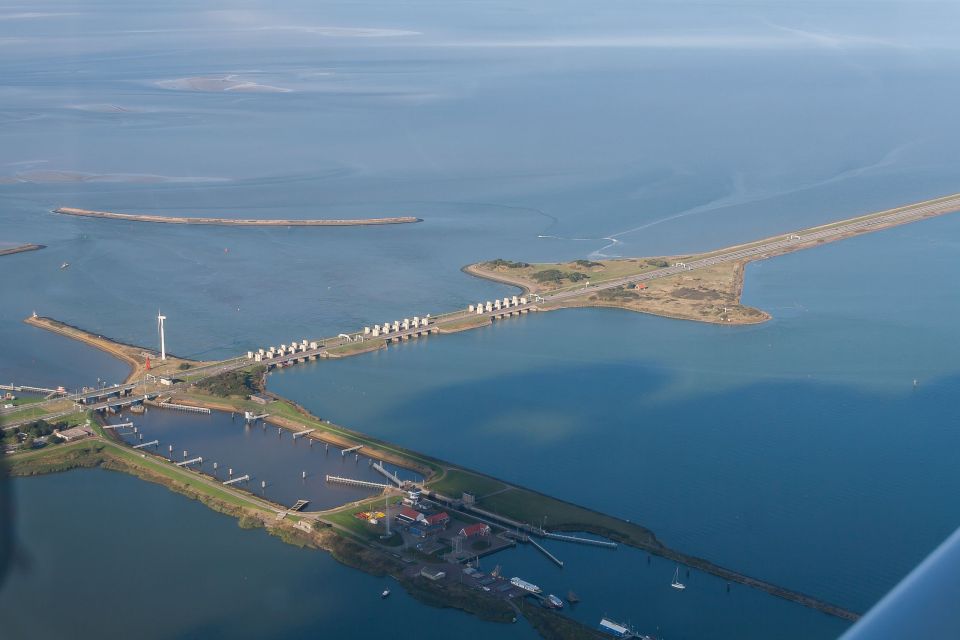There are many ways to keep the Netherlands safe from rising sea levels even in the distant future. New research has mapped all the major spatial options that may be necessary in the long term to deal with sea level rise.
Picture: The Afsluitdijk in the North of the Netherlands (by MD van Leeuwen, Wikimedia Commons).
Possible options include elevated or floating construction, an extra ring dike around the Randstad, closing off river arms and creating a coastal lake to store river water. According to the Dutch Ministry of Infrastructure and Water Management, it is important that these options are identified now, because their development, decision-making and implementation will cost a lot of money, space and time.
The study is part of the Sea Level Rise Knowledge Programme (Kennisprogramma Zeespiegelstijging). It was commissioned by the Ministry of Infrastructure and Water Management and the Delta Commissioner, in collaboration with the Top Sector Water.
Also read: Boskalis protects Maldivian island from rising sea levels
Existing approach can protect the Netherlands
In November, it was already revealed that it is technically possible to protect the Netherlands from a sea level rise of up to 3 metres with the existing approach of dike reinforcements, storm surge barriers, sand replenishment and pumping. In one of the KNMI’s climate scenarios, this rise is reached a little after 2100. In another scenario, we will not have reached 3 metres by 2300. In the new study, possible scenarios for 2 metres and 5 metres have been worked out.
Minister Mark Harbers (Infrastructure and Water Management): ‘We see that there are possibilities to cope with even an extreme sea level rise of five metres. We also see that these will have substantial consequences for the layout of the Netherlands. It is good news that we do not have to choose tomorrow, but that we still have time to do so. That time is also needed to gather more knowledge and to prepare our country now for the major choices we will be making in the future.’
Delta Commissioner Co Verdaas: ‘Together with our engineers, hydraulic engineers and knowledge institutions, we have looked at how we can continue to live safely here in the long term. As a low-lying country, rising sea levels present us with an enormous task and far-reaching choices. But if we can handle this anywhere it is here. This research shows that technology and natural solutions can help us do just that. And that we must already take into account the spatial challenges of the future in everything we do.’
Three lines of thought for the distant future
The options for dealing with the rising sea were researched and written up by three broadly composed research groups, in which governments, knowledge institutions and companies joined forces.
- The first consortium was concerned with the “protect” mindset, which builds on partly already known measures such as protection by flood defences and sand nourishment, closing off river inlets and draining excess water with pumps.
- The second group focused on “seaward”, in which space at sea is used to solve future bottlenecks – such as absorbing peak discharges from rivers.
- The third line of thought was “move with the flow”, in which land use and construction are adapted and water is given more space.
Also read: Van Oord’s new LNG hopper dredgers reinforce Zeeland coast
Taking the future approach into account now
From these three schools of thought came a variety of options for keeping the Netherlands safe in the future. There are plenty of options for dealing with rising sea levels, but in time this will require major spatial choices. And whatever choices are made will cost money, space and time.
The calculations and drawings will be further elaborated in the coming years. For example, the consequences of the spatial choices for areas other than water safety, such as agriculture, water quality, shipping and nature, will be examined. There will also be follow-up research into the space that must be reserved now to keep the door open for future measures.
Consortia
A total of twenty parties participated in the consortia that provide a picture of what is technically, physically and spatially possible and what is not. The collaboration took place under the banner of the Top Sector Water.
- Seaward: Ministry of Infrastructure and Water Management, Delta Commissioner staff, Rijkswaterstaat, Sweco, Arcadis, RHDHV, W+B, ZUS, WSP WUR, TUD, Deltares, Van Oord, Boskalis.
- Protect: Ministry of Infrastructure and Water Management, Delta Commissioner staff, Rijkswaterstaat, W+B, Arcadis, HKV, RHDHV, Sweco, BoschSlabbers TUD-CT, Deltares, Van Oord.
- Moving with the flow: Ministry of Infrastructure and Water Management, Delta Commissioner’s staff, Rijkswaterstaat, Arcadis, RHDHV, Sweco, TAUW, One Architecture, DeFacto, TUD, WEnR, Deltares, RUN, EUR.
Also read: Van Oord commits to climate adaptation, the wait is for uptake








